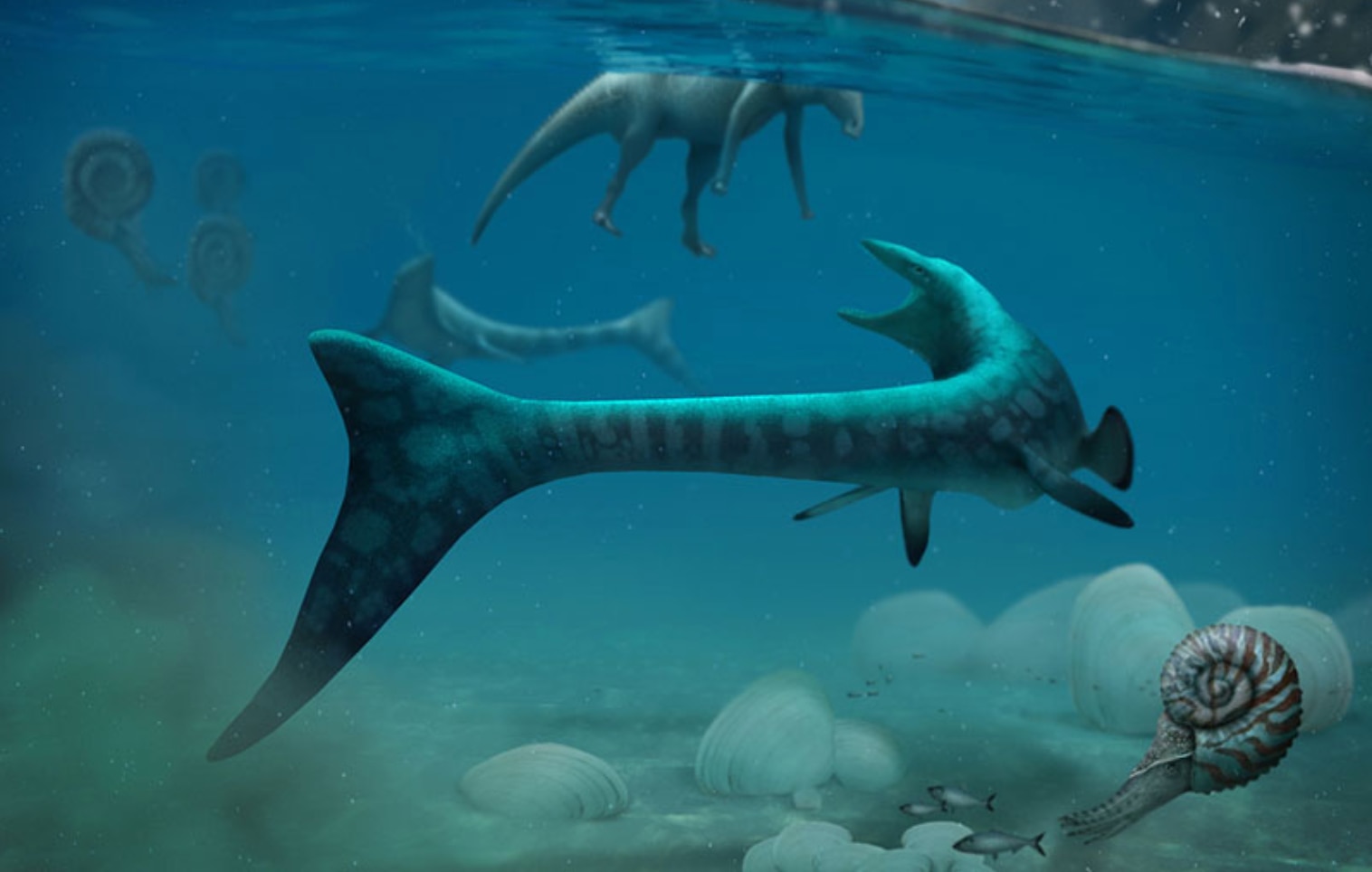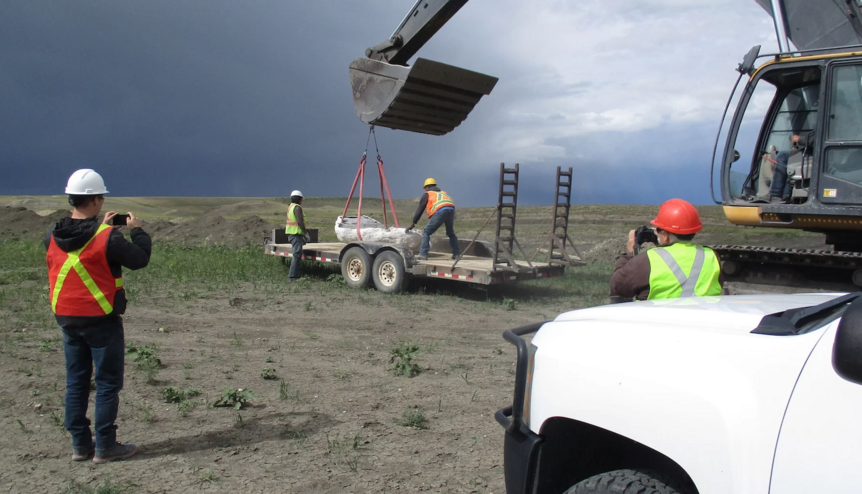Create a free profile to get unlimited access to exclusive videos, sweepstakes, and more!
Canadian gemstone miners discover prehistoric sea monster skeleton

In a recent moment of genuine surprise, Canadian miners hunting for gemstones in Alberta discovered much more than the iridescent, opal-like gems prized by jewelers and collectors. Instead of unearthing the glittering ammolite stones, this lucky crew stumbled across the fossilized skeleton of a prehistoric sea creature!
This 70-million-year-old specimen of a marine lizard was immediately identified by paleontologists as a mosasaur of the genus Tylosaurus, an ancient beast that once prowled the Western Interior Seaway from the Gulf of Mexico to the Arctic Sea when that region was underwater.
If the name of this aquatic apex predator sounds familiar, a larger mosasaurus was the star attraction in Jurassic World's pavilion feeding show scene from 2015 that shocked the crowd with its ravenous leap into the air to snatch a shark snack as seen in the video below:
Enchanted Designs Limited miners digging at Alberta's Bearpaw Formation for rainbow-shaded ammolite gemstones, which are created by the fossilized shells of extinct marine mollusks called ammonites, discovered the nearly complete remains of the "T-rex of the Seas" in soft black-shale mudstone. The impressive specimen measured in at between 20 and 23 feet long.
"We've got everything from the head almost to the tip of the tail," Donald Henderson, of the Royal Tyrrell Museum of Paleontology in Drumheller, told Live Science. "We don't have much in the way of flippers. They were lost to decay, or maybe they were bitten off."
All mosasaurs had a similar body style, with heavily muscled cylindrical bodies, elongated jaws, and a powerful tail for swift propulsion. Its limbs had evolved over the ages into efficient paddles used for steering around the primeval seaways.
"These things tend to be big," added Henderson. "I think they had to be big to survive in that environment. Once they grabbed you with their main teeth and started to work you back, those teeth would keep the food from struggling out. So the only way you could slide was down the throat."




























